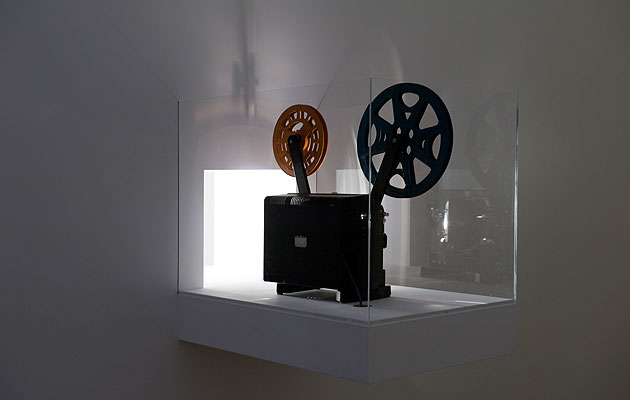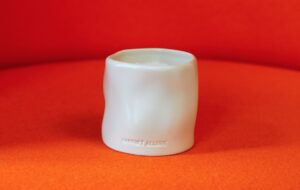|
|
||
|
The Monument to the Partisans, situated in the forests of the Petrova Gora mountains of Croatia is a large half-sculpture half-building, designed by Croatian avant-garde artist Vojin Bakic. Built to commemorate the anti-fascist resistance of the Second World War, it has lain neglected for a number of years, not least due to the collapse of Yugoslavia and the subsequent wars of the 1990s. Eight storeys high, concrete and steel, enigmatic and powerful, it is a reminder that Tito’s unaligned Yugoslavia maintained an abstract modernist culture long after the Soviet Union went down the road of socialist realism. David Maljkovic, (b.1973) is a Croatian artist for whom the monument has become something of a calling card. At his new show at the BALTIC centre, a retrospective of sorts, it appears in various guises, most prominently as the main setting for his trilogy of short films Scenes From a New Heritage. Each of these portrays people coming across the monument at some point in the future, discussing in an incomprehensible tongue its mysterious abstraction, exploring its dishevelled interior, and even hanging around playing some kind of football at its base. The films are an ironic reflection on the past’s future, with tin-foil-clad vehicles working as wry signifiers of futurity and progress. The monument pops up elsewhere in his work, with homemade sculptural recreations acting as totems, a catch-all symbol both powerful and slightly ludicrous when reduced in size and divorced from context. It takes its place among other works, making up a smorgasbord of conceptual strategies. Maljkovic has built a box-within-a-box in the exhibition space which must be circumnavigated to gain access to the objects within; a delaying tactic intended to emphasise the spatial and sensory qualities of the artworks, from the empty vitrine of Sources in the Air to the timber partition sculpture upon which the photographs of After the Fair are hung. A metaphor that threads through Maljkovic’s work is that of “projection”. This can be taken literally, embodied by the whirring, antiquated analogue projectors; or implied as in the ‘lenses’ of plasterboard through which some films are viewed. It is also explicit in the shadow-piece Temporary Projections, a photographer’s umbrella held close against the wall, illuminating a series of small paintings which nonetheless remain obscure to the viewer. Of course this all implies not only projections in light and space, but also in time. Maljkovic’s interest in monuments, world’s fairs (especially the hauntingly futuristic pavilions of the Zagreb Fair) and experimental cars, is in their embodiment of the political will to imagine other worlds and changes to the structures of human life; a view of the world laced with tragic resonances considering where Balkan modernity ended up. Recently the Monument to the Partisans has been popping up in the world of flashy design blogs, as part of a burgeoning aesthetic interest in post-Soviet ruins, Tarkovsky-ish socialist chic and so on. There are times that Maljkovic’s work does appear to wallow in the same post-socialist melancholia as so many others, all stained concrete and failed dreams. But there’s much more going on here than instagrammed-dilapidation, and the work is elevated partly by its spatial imagination, partly by Maljkovic’s sly humour; his tin-foil-coated football evokes not only a space helmet (the Yugoslav Space Programme?) but also, of course, a geodesic “bucky-ball”, the future on the very cheap. Perhaps the most interesting moment of the New Heritage films shows people of all ages hanging around in the overgrown approach to the Partisan Monument as if it were a typical Mitteleuropean square. It is this sense of the commons perhaps, a vision of quotidian collectivity amid decay, that is far more interesting than the usual solipsism of ruin worshippers. |
Image courtesy David Maljkovic and BALTIC, photo by Colin Dawson
Words Douglas Murphy |
|
|
||



















